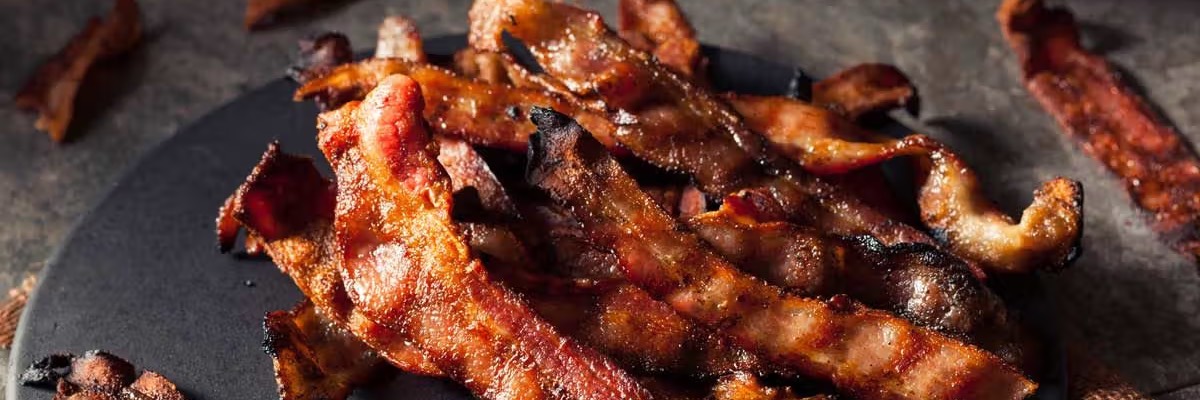Frequently Asked Questions
Making your own bacon can be daunting for newcomers at first, but don’t worry! There are tons of resources out there, and we’ll cover some of the most common questions here.
If you have a question that isn’t covered here, please feel free to join the Facebook group and search there. Our members are very friendly and helpful - we were all beginners at some point!
What is curing salt?
Curing salt is salt that includes nitrites, a chemical used to kill bacteria. Technically it is possible to cure meats with only salt and sugar (or even just salt!), but by including curing salt in your recipe you’ll have a better, safer end product.
Nitrites kill bacteria more effectively than salt or sugar, and bacon made without nitrites can lose some of it’s natural appealing meaty color. WARNING: Curing salt can be toxic in high quantities!
Is curing salt dangerous?
YES! Nitrites, the primary ingredient of curing salt, can be dangerous in high quantities. You should always use caution when weighing out your ingredients, especially your curing salt. The good news is that the amount of curing salt used in all recipes are tiny - around 1% of the overall weight of the recipe. The even better news is that there are a wide range of calculators available online to help you calculate the correct amount of salt, sugar and curing salt to use in your recipes.
Do I need curing salt?
Technically no - salt and sugar can be used to cure meats. However, using curing salt will give you an all round better end result. It will have a better looking color, and will be safer for longer.
Can I use Morton’s Tender Quick as a curing salt?
While Morton’s Tender Quick is a curing salt, Morton’s do not recommend that you use it as a curing salt. From their website:
“We cannot recommend Morton Tender Quick for use with pork belly or bacon. Due to the differing fat content of individual cuts, the curing time for these items may vary significantly. For this reason, we cannot recommend the appropriate amount of Tender Quick or curing time in this application.”
Should I use a dry or wet brine for making bacon?
Both will work, but you will find that a dry brine (also known as the “EQ” method) is more precise and much easier to fine tune once you are familiar with the process.
What is the wet brining method?
Wet brining is the process of combining your salt, sugar and curing salt with water, and soaking the meat in the liquid brine. This is generally more messy and less precise than dry or EQ curing.
What is the “EQ” method?
The EQ, or “Equilibrium” method is used for dry brining meat. Once you have measured your salt, sugar and curing salt, the ingredients are combined and then rubbed into all areas of the surface of the meat. This method offers more accurate results than wet brining meat, and it is much easier to adjust the recipe as you develop your curing skills. One way to think about this method is that as the moisture is removed from the meat, the cure ingredients replace them (hence the term “Equilibrium”).
Can I add other ingredients?
Absolutely! One common substitute or addition is maple syrup, giving your bacon a delicious sweet kick. Other common additions include jalapeno, coffee, pepper and even whiskey or bourbon.
We recommend keeping your recipes simple to start with, and adding more ingredients and flavours over time. You can also check out our Facebook group for more ideas for recipes and ingredients.
Do I need to use a vacuum sealer?
No - it is possible to use Ziploc bags to wrap your bacon for curing, so long as you are able to remove as much air as possible from the bag. However, using a vacuum sealer will make your life much easier and lead to a much better end result. Additionally, you’ll find you use it for a growing number of uses in your kitchen!
Are we missing a question? Do you see any inaccuracies in the questions above? Please reach out to us on the Facebook group, we’d love to hear from you!
